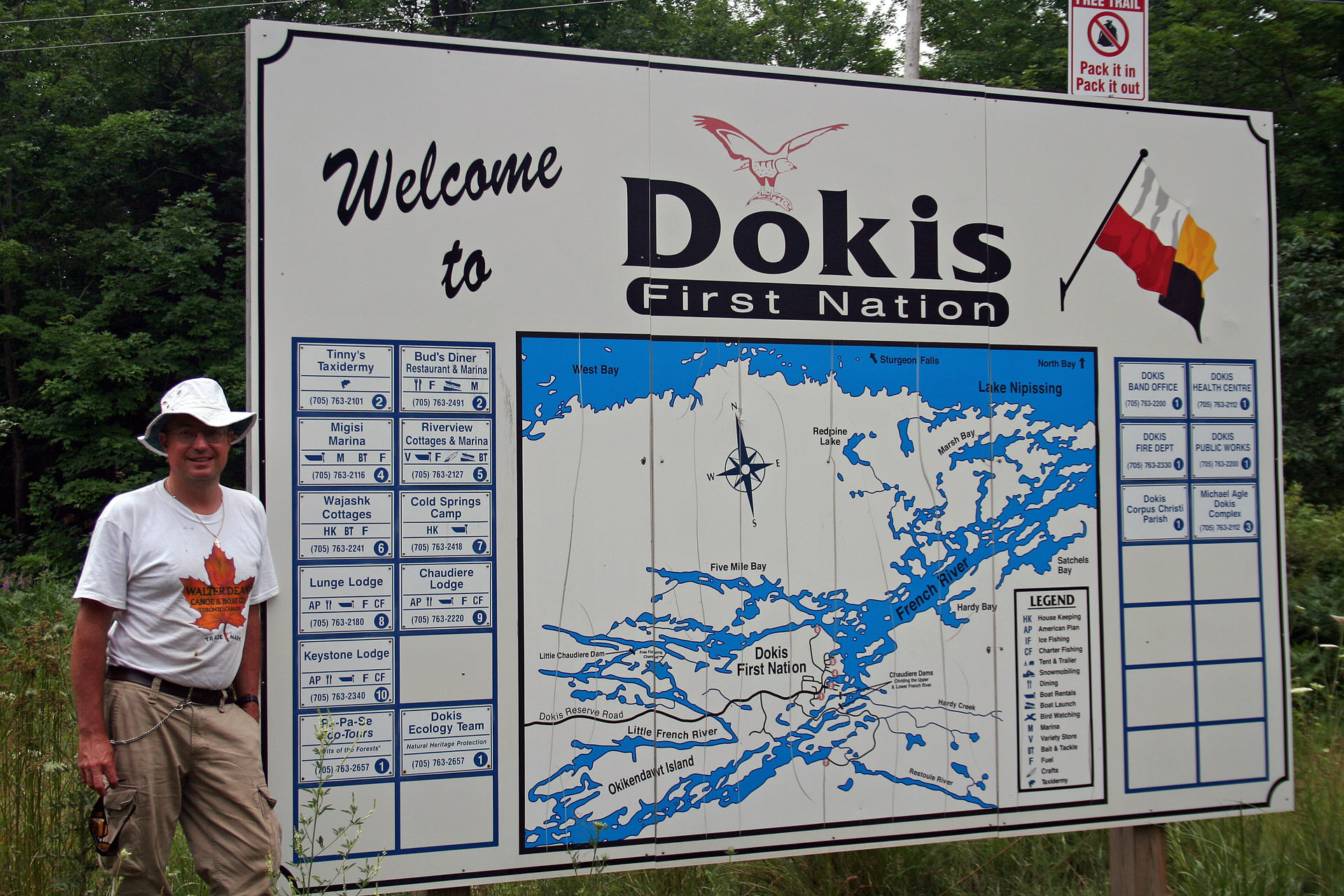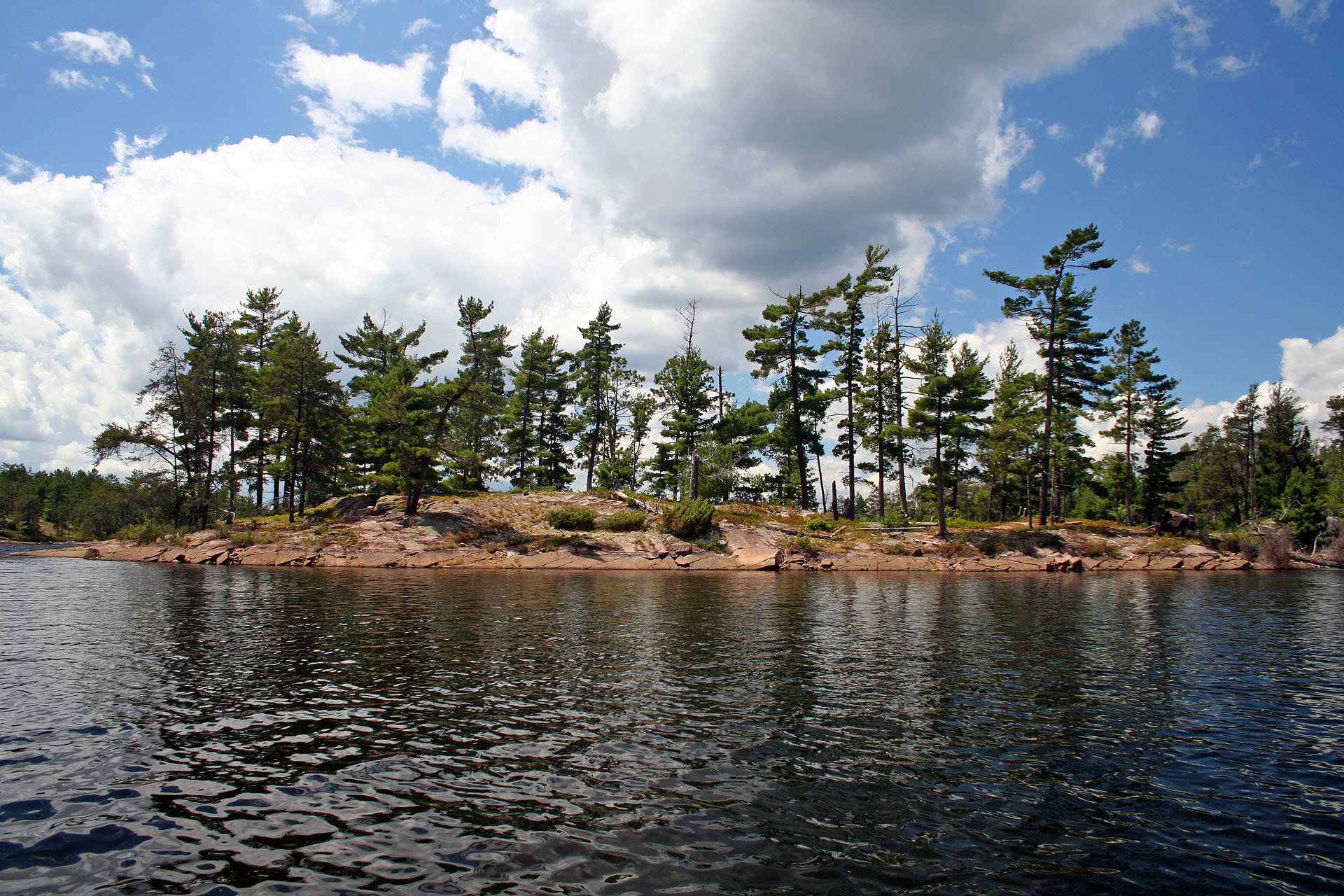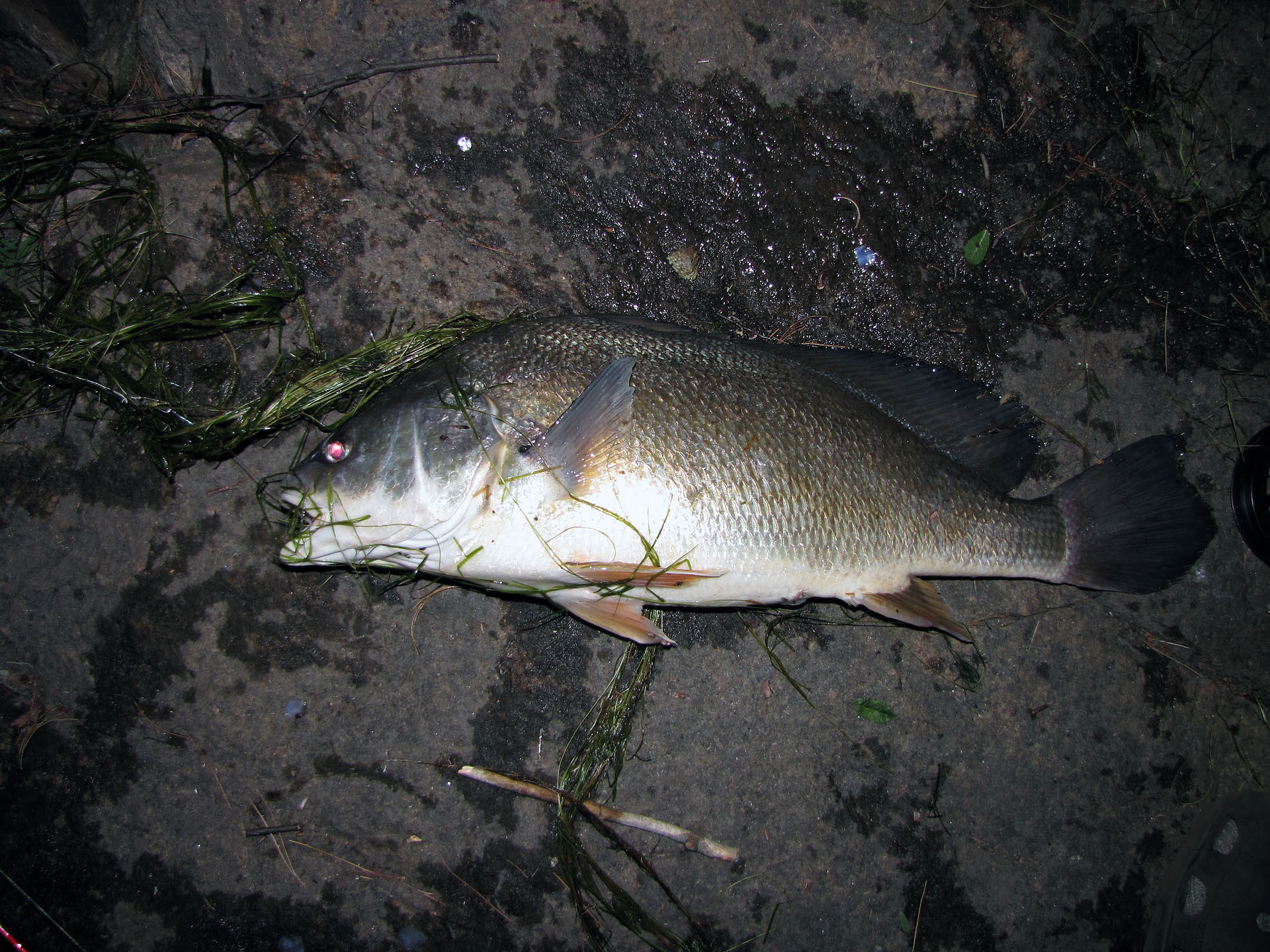Blog po polsku/Polish version: http://ontario-nature-polish.blogspot.com/2010/08/french-river-ontario-dokis-july-2010.html
The sun was setting, the rocks were getting that very special reddish color and once we were back in the bay near the island, I took several photos of the setting sun. I was still up after midnight and tried fishing—catching a big fish! I had never caught this kind of fish and I rightly suspected it was a carp (although one guy, seeing its photo, said it was a big small-mouth bass). We cooked the fish, yet it was not very tasty.
For me the French River is like a magnet—I never tire paddling on it! Besides, I had never even visited that part of the river, so even though technically we paddled on the same river, in reality it was a totally new experience. After all, it is a long river!
I have already written about the history of the French River in my other blog (http://ontario-nature.blogspot.com/2010/06/french-river-trip-september-4-9-2008.html ).
Because it is a long drive from Toronto to Okikendawt Island (at least 5 hours), we decided to spend the first night in Grundy Lake Provincial Park, located near the intersection of Highway 69 and Highway 522. There is also a store, gas station and a canoe rental place at that very intersection. We rented a nice Kevlar Scott 17” light canoe, put it on my car and drove for a few minutes to the park. Grundy Lake Park as quite busy and we did not manage to get a water front campsite, ending up on site no. 113, quite close to the water. Even though we were a little tired and wanted to be up early the next day, we had a campfire as well as spent some time sitting on the rocky shores of Gurd Lake. Catherine being Catherine, tested the waters swimming to a nearby island.
The next day, July 15, 2010, we took down the tent and with our canoe precariously attached to the roof of my car (with only front and back polycord), drove on highway 69 up north, then turned right to highway 64, passed the town of Noelville and eventually got on the Dokis Reserve Road which was more washboard and potholed than Toronto's worst... so bad we stopped at least a half dozen times to rearrange the canoe. It took us across the Dokis Indian Reserve to our final destination—a resort called Wajashk Cottages, operated by Jackie Restoule, where we parked our car, loaded the canoe and embarked on our trip. In fact, most of the reserve residents' surnames are either Dokis or Restoule! There is a noticeable difference whilst traversing the reserve... a true sense of community and nature as one. Even the architecture with its beautiful painted art forms blends into the surroundings. The reserve is apparently quite affluent, mainly due to getting a significant amount of money it received from the sale of the Dokis timber in 1908—at that time, the Dokis Indians, numbering 81 souls, became, per capita, the richest Indians in Canada! Since the money was wisely invested, it lasted for many decades afterwards. The Dokis reserve also has a very interesting and rich history; for those interested, I suggest reading “Dokis: Since Time Immemorial” by Wayne F. LeBelle.
We decided to paddle up to Five Mile Bay, check out available campsites and pick the best. As always, the surrounding were just awesome—rocky and forested shores, plenty of islands and rocks, very little boat traffic, here and there an occasional cottage... After less than one hour we reached our first campsite number 127—it turned out to be on a sizable island, forming a small bay between the land... and we immediately fell in love with it!
The whole island was ours, there was plenty of dead wood (yet we brought two bags of our own, just to be environmentally friendly and support the local economy, I guess). I set up the tent, Catherine carried our equipment from the canoe and later hung a big, white tarp, which was supposed to protect us from rain. Once we were done, we set out to explore our possessions. It was not a very difficult task: the island was quite small (about 70 x 30 meters), yet extremely picturesque, with plenty of tall pines, rocks and—surprise!—full of blueberry bushes, sagging with big, ripe and dark blueberries. We probably consumed a kilogram or so every day and still there was plenty left! It was also a good sign—that the island had not been visited by black bears, who love eating blueberries! It was quite windy and we did not go for an evening paddle, instead opting for sitting around a campfire.
The following day (July 16, 2010) it was so windy that we did not go canoeing at all: we realized that paddling north, i.e., against the wind, would be extremely difficult, if not impossible, and paddling south, with the wind, would be extremely easy, yet it would be most likely a one-way journey! So we just spent the day reading, wondering around the island, fishing and listening to the radio. The tarp, whipped by the wind, became so noisy that after a while we decided to take it down.
I kept casting and soon I caught a nice pike; at least we had fresh dinner that night!
On July 17, 2010 we paddled on Five Mile Bay; it was still windy and we moved quite slowly, but at least we were looking forward to the paddle back! After reaching campsite no. 128 on a small island (not as nice as ours, with limited space to set up tents), we had our lunch there, made a loop around the next, private island and decided to turn back—the wind was so strong that despite our paddling our maximum speed was only 4 km/h and it often dropped to 2 km/h. We stopped paddling and simply let the wind push the canoe—it was moving fast, 2 km/h towards our campsite, while we were able to just sit in the canoe and enjoy the surroundings. In the evening we went for a short paddle and visited a couple of secluded bays just south of our campsite.
The sun was setting, the rocks were getting that very special reddish color and once we were back in the bay near the island, I took several photos of the setting sun. I was still up after midnight and tried fishing—catching a big fish! I had never caught this kind of fish and I rightly suspected it was a carp (although one guy, seeing its photo, said it was a big small-mouth bass). We cooked the fish, yet it was not very tasty.
I have to mention here that we were absolutely impressed with the canoe we rented: it was brand new, very light, very spacious, very stable, very fast—we loved it! Well, after we came back, it turned out the rental place had an identical new canoe for sale! To make the story short—in less than 2 weeks we attended a group event on the nearby Pickerel River and we bought the canoe.
July 18, 2010 was a much better day—it was sunny, the wind was gone and so we decided to paddle towards Lake Nipissing—and maybe even reach it! Departing just after 9 am (considering that we always went to bed well after midnight, I wonder how did we manage that?), we had the whole day before us. We checked a few campsites (122, 124), then paddled north of Comfort Island, then towards Hunt Island and reached a cluster of three island campsites (118, 119 and 120). Some were nice, others were so-so—yet no matter which campsite you are camping on, you will always have wonderful scenery around! We also reached campsite no. 117 which was quite secluded, on the shores of a small bay (Bob's Bay)—most likely it would be our choice if we come here again. After paddling among some islands towards the main channel, we stopped to rest—and again that place was so full of blueberries that in no time we were totally full! We enjoyed lying on the rock, watching an occasional boat pass by and just relishing the nice weather... alas, nothing lasts forever: suddenly it became very windy. We jumped into the canoe—after all, we were quite a distance from our campsite (10 km) and it was already 5:15 pm—and started paddling. Even though we were more-less sheltered from the wind and waves maneuvering among islands and in channels, from time to time we had to paddle across relatively wind-exposed bodies of water—and exactly against the wind! The waves were somehow high, yet they were not a problem—it was the wind that so blowing so hard that the canoe hardly moved in spite of our incessant paddling! We were the only vessel on the river so Catherine could not appeal to a nice boater for a tow! Once we reached a sheltered area, we had to rest for awhile to gather strength for another leg of our trip. At one point we were even considering staying in this area overnight. Of course, there were some sporadic cottages here and there, yet apparently nobody was in them at that time. Whereas we did carry with us rain gear and some extra clothes, we did not even have a tarp, let alone a small tent; thus, spending a night under the stars was not something we were looking forward to! Nevertheless we slowly managed to reach Five Mile Bay and arrived at our campsite before 8:00 pm. It was a good lesson for us and on our subsequent trips we always carried with us an emergency waterproof bag, containing some food, propane, stove, pot, cups, matches, radio, flashlight, tarp, emergency blankets and other things that would enable us to spend a night in a relative comfort. Later we even bought a small tent, to be used for just emergency purposes.
On July 19, 2010 we paddled to Little Chaudere Dam. The French River flows from Lake Nipissing to Georgian Bay through a myriad of various channels and the total drop of the river is 19 meters. In order to regulate water levels on Lake Nipissing, three dams were constructed in the early 19th century: two Big Chaudiere Dams and one Little Chaudiere Dam. It was a very nice paddle and on our way back, we stopped at Wajashk, chained the canoe to the dock and drove to the town of Noelville to do some shopping and replenish our diminishing LCBO-related supplies! While in town, I spoke to a few of its denizens. They told me that not long ago the town was almost 100% French, but not anymore. Yet the French language was still used by a lot of people. I was also told—what really surprised me—that they couldn’t really understand French speaking people from the province of Quebec, as they used a different dialect! Since I do not speak French at all, I cannot comment on that, but I have heard stories about people coming from France to Quebec who had a very tough time communicating with French speakers from Quebec, especially those living in smaller towns.
Our shopping done, we sat in a small park next to the Roman Catholic Church, had fresh salad and then drove back to Wajashk, stopping at the local garbage dump on the reserve, hoping to spy a bear or two. There we met a very nice gentleman, who told us a lot of interesting stories about life on the reserve—his name was Bill Restoule, the previous Indian Chief of the Dokis Reserve from 2002 to 2006 (by the way, the current chief, Denise Restoule, is the first woman to be elected chief of this reserve). In fact, I had purchased a book on the Dokis Reserve just a few weeks before and thus could somehow relate to some of the things he was telling us. Upon reaching the resort, we parked the car, got into the canoe and arrived at our campsite after 9:00 pm.
Usually we went to bed well after midnight; our LED head lights were quite bright and let us freely move all over the island. One night we made a very interesting 'discovery': while shining the light at the blueberry bushes, all the blueberries became so fluorescent that it was much easier picking them at night than during daylight. Interesting phenomena, since I do not think there was any nuclear power plant in the area or nuclear fallout!
The next day the weather seemed to be a little unstable, yet we still went for a paddle. After paddling by Wajashk, we continued south and arrived at the Dokis Marina where we treated ourselves to ice cream and chips. While at the marina, the wind picked up considerably, dark, ominously looking clouds moved in and we heard thunder and occasional lighting. It was getting late, yet we were still waiting and hoping that the thunderstorm would move away. It did, we left at 7:30 pm, paddled as fast as possible and got to the campsite at 9:30, when it was already very dark. It was another close call and it only reinforced our resolve to carry an emergency overnight bag in the future.
July 21, 2010, our last day. It took us a while to pack up and put all the stuff into our canoe and in no time we reached Wajashk, loaded the car and drove again to Grundy Lake park to spend our last night there. This time we got campsite number 522 (not recommended unless you like car watching). We set up the tent, then paddled on Gut Lake, passed under the bridge and reached Grundy Lake. It was a nice lake, but having just returned from the French River, we were not very impressed! The next day we took the canoe back to the Grundy Lake Outfitters, drove to the Hungry Bear Restaurant for a late-night all-you-can-eat salad dinner and about 10 pm left for Toronto.
More photos from this trip: http://www.flickr.com/photos/jack_1962/sets/72157624684506283/with/4928339368
Blog po polsku/Polish version: http://ontario-nature-polish.blogspot.com/2010/08/french-river-ontario-dokis-july-2010.html











Your bass is a Sheepshead (aka) Freshwater drum. :)
ReplyDeleteWow, thanks for your comment! I would have never guessed-I was told it was a bass, but I knew it was not, so I thought it was a carp.
ReplyDeleteHi Jack...I was sleepless in Muskoka and discovered your blog. Will you be returning to the French River - Pickerel River - anywhere within Muskoka, Parry Sound, Almaguin or Loring-Restoule? Explorersedge.ca would be interested in having you blog for us if so. Kate@explorersedge.ca. I enjoyed your detailed posts - very well written If you would be interested in writing for us, let me know. Regards!
ReplyDeleteHi,
ReplyDeleteYes, I will certainly be returning to the French River, Pickerel River, Restoule Park and the Massasauga Provincial Park, probably this summer. Contact me if you have any other questions on my blog, jack.from.ontario@gmail.com
Regards,
Jack
Yes, that is a sheephead, or as we call them laughingly, Brown Trout. We catch them each trip up to the Dokis Riverview Resort, and while they pull like a horse, we have not found them to be good eating, but then we fry them which might not be the best way to prepare them. Maybe cubing them and then boiling might be better. Generally don't bother because we enjoy the other fish selections available there in the French.
ReplyDeleteThanks for your comment. There was plenty of confusion as to what fish it was, but finally the anonymous poster gave me the proper name. Pity this fish is not listed in the fishing guide, it's so difficult to identify such fish while you're on the water and can't Google it! I'm sure almost any fish is edible provided you know how to cook it-I know people who eat dogfish and garpike--and of course carp, which is usually thrown out, is considered to be delicacy in many countries!
DeleteRegards,
Jack
Hi, maybe you will get this and maybe you won’t because it’s been 14 years since you wrote your blog, but did your site 127 (I do know it has been renumbered and is now 140) have a thunder box/privy?
ReplyDeleteHello,
DeleteUnfortunately, I don't remember in campsite #127 had any thunderbox. However, if it did not have one then, perhaps it has been set up since then?
I just returned from another camping/canoeing trip on the French River and our campsite had no thunder box/privy. Fortunately, the adjacent site did; it took some walking through the bush, we we managed to use it.